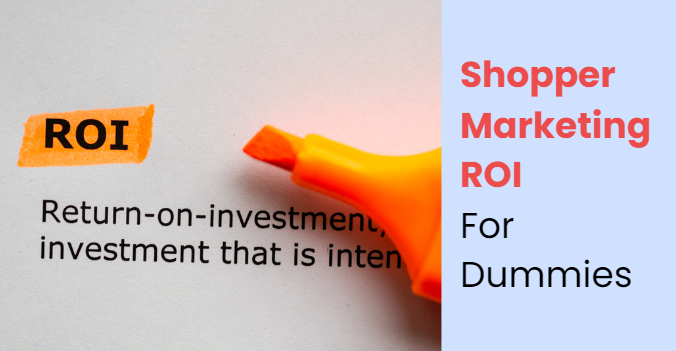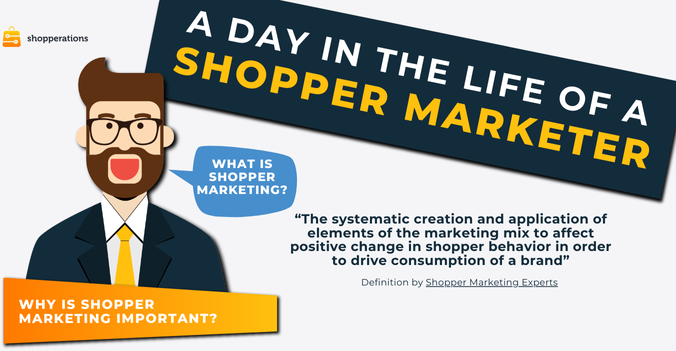
Shopper marketing in the Consumer Packaged Goods domain has blossomed in the last decade but may have entered its awkward teen years. I had an opportunity to interview hundreds of practitioners from dozens of companies over the last two years, and it’s become apparent that shopper marketing is still searching for its identity, experiencing growing pains, and facing numerous obstacles. It is now time for this discipline to grow up and take itself seriously.
On the positive side, shopper marketing achieved quite a lot. It’s self-organized and created its own publications, associations, conferences, and even a university. The investment in shopper marketing has been steadily rising, in part because the function is being embraced by CPG companies that have discovered it delivers tangible returns and exceeds ROI of traditional media or trade.
Despite these important milestones, however, the shopper marketing industry still needs to unleash its potential and become sustainable. To achieve these goals, the discipline must overcome several challenges.
Lack of Common Definition and Mission
No single definition of shopper marketing has been agreed on yet, and those that exist are quite different. This makes it hard for shopper marketers to evangelize their role within their organizations and relate to one another when it comes to industry networking. Where in some companies, shopper marketing is charged with driving groundbreaking, strategic platform initiatives, in others, it still serves a tactical support role for the sales teams and is tasked with implementing hundreds of small events a year. In fact, the reason many CPGs get into shopper marketing is not because it's been proven to be good for the long-term viability of the company, but rather because they realize that it is a cost of doing business with the modern retail trade.
Fuzzy Process And Methodology
Shopper marketing seems to be more of an art form than a science. Among the industry professionals I interviewed, many are convinced that their company's process is different from others. While on the surface that is true due to inconsistent nomenclature, various styles of planning and reporting, the core of what shopper marketers do is essentially the same: they design and implement marketing campaigns that drive traffic to their retail customers' stores and put their company brands in the shopping baskets. What complicates the matter is that shopper marketing is not a self-sufficient function and highly depends on brand strategic inputs and funding as well as sales' support and acceptance. Being at the cross-roads of these functions, shopper marketers have to adapt their style and process to get things done.
Ambiguous Metrics
Because shopper marketing resides between brand marketing and sales, it is often measured with both driving brand equity and hard ROI. Shopper data is still not widely available or affordable enough to come up with a unique set of metrics that shopper marketing can call its own. This “right brain vs. left brain” dilemma is further complicated by the fact that most shopper marketing teams are called to drive soft, relationship-based metrics, which are too subjective and thus impossible to quantify.
Absence Of Benchmarking Data
When shopper marketing newbies want to know what good looks like, they have to rely on their own companies’ historic results (that is, if they are gathered and preserved consistently, which is very uncommon). The benchmarking data for shopper marketing activities exists in many pockets and requires tremendous effort to synthesize. If you want to know what average sales lifts are typical for an in-store demo campaign, an average open rate for a retail customer newsletter, or an expected redemption rate for a direct mail offer, you would have to rely on what vendors tell you -- if they even agree to release this information. Unbiased, comprehensive benchmarking data to help the entire shopper marketing industry cut waste? That data simply doesn't exist today.
"Stone Age" Technology And Tools
Shopper-facing technology is booming, and new apps and digital vendors constantly pop up on our radars. Shopper marketing investment in digital and mobile tactics is seeing tremendous growth, thus further fragmenting the spend. This makes for a painful irony: shopper marketers still live in the 1990s when it comes to collaboration and planning tools. 95% of CPG shopper marketing professionals rely on Excel, PowerPoint and email as primary means of communication and are mired by the disconnected, offline documents. The industry to date has failed to embrace real-time systems and tools to achieve transparency, foster collaboration and enable accountability.
Contrasting with Category Management
Readers may argue that these challenges are typical for many industries, and shopper marketing is no exception. I would like to draw a comparison to another capability in the CPG domain – one that emerged about a decade earlier and evolved quite differently. The category management capability was defined, described and standardized into a tangible methodology in 1990's by Brian Harris of the Partnering Group. Category management today has proven its value and has a rightful place when it comes to collaborating with retail customers. The industry has a common set of definitions and metrics, its own software tools and analytics approaches.
For shopper marketing to succeed the way category management did, it needs to undergo serious transformation. The set of issues outlined above must be tackled soon in order for the domain to stay agile and relevant … to ultimately not just survive, but thrive.











